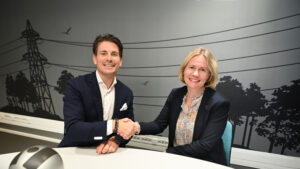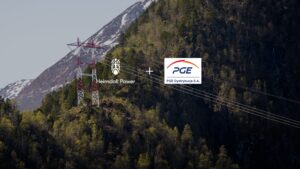Electrification, growing consumption and the variability of renewable generation pose challenges to the capacity of our power grids. Technology from Norway’s Heimdall Power can make a very effective contribution to the solution.
Imagine that only three of the four lanes on our highways are being utilized. The fourth remains unused. So it is with our power grids. Only 70-75 percent of their transmission capacity is being used.
– The core of the problem is that grid operators do not know the grid’s actual capacity, says Anders Skånlund, CCO of Heimdall Power.
The technology company makes sensors that help the grid operators better utilize the grid’s capacity.
– The sensors are attached to transmission lines, providing data which tells us how much current the lines can actually carry. Then we can open the fourth lane, Skånlund explains, and adds that the sensors also identify critical periods where we should put less current on the lines.
Potential for big gains
Network companies in six different countries (including Norway) have already put Heimdall Power sensors in service. The information they provide allows companies to use our power grids more efficiently and become better able to handle bottlenecks in the system, icing on lines, falling trees and the risk of forest fires. There may also be fewer risky operations for those who work on the lines.
– When grid operators know how much capacity they have, they can make room for more renewable electricity, new industrial consumption, and more fossil consumption can be electrified. That makes for increased value creation, lower climate emissions, increased security of supply, cheaper electricity and smaller price differences. The sensors also provide valuable insights for grid investments so that investments are made in the right place, at the right time, and so that we can avoid making bad investments. Our solutions contribute to adding more grid capacity cheaply and quickly, and avoid long licensing and development processes, Skånlund explains.
Undermined by regulation
Skånlund believes that Norway can become a pioneer in the efficient utilization of grid capacity. Everyone wants more security of supply, resource efficiency, security for employees, business development and emission cuts, but for the time being we do not yet have more up-to-date and comprehensive policies and regulation.
– Today’s regulation encourages grid companies to build more grids, and companies have few incentives to think about efficient grid utilization, integrity and total cost. Network companies are being undermined by regulation. Many of them are discouraged. Without rational incentives for grid companies, the fourth lane can remain hidden and unused.





